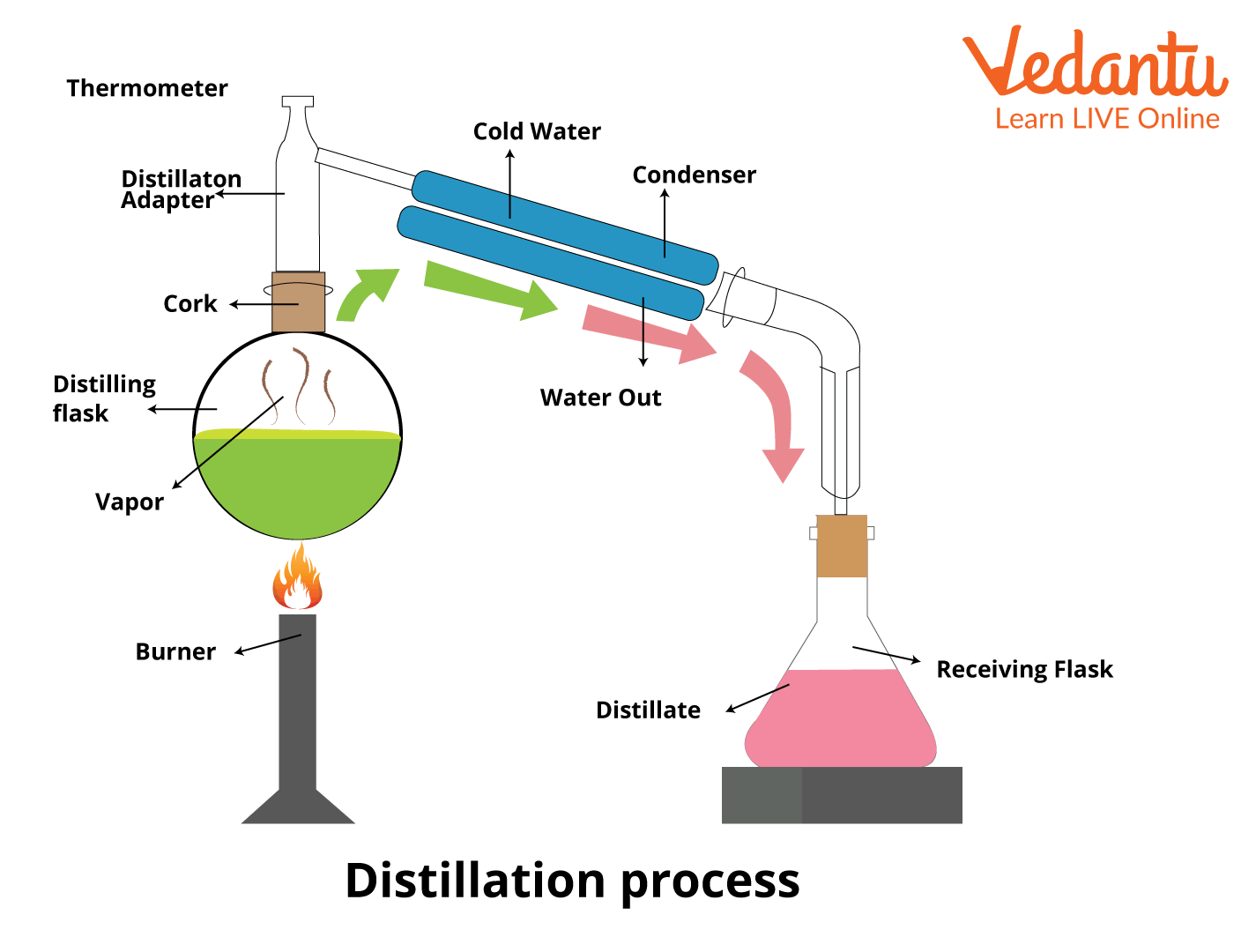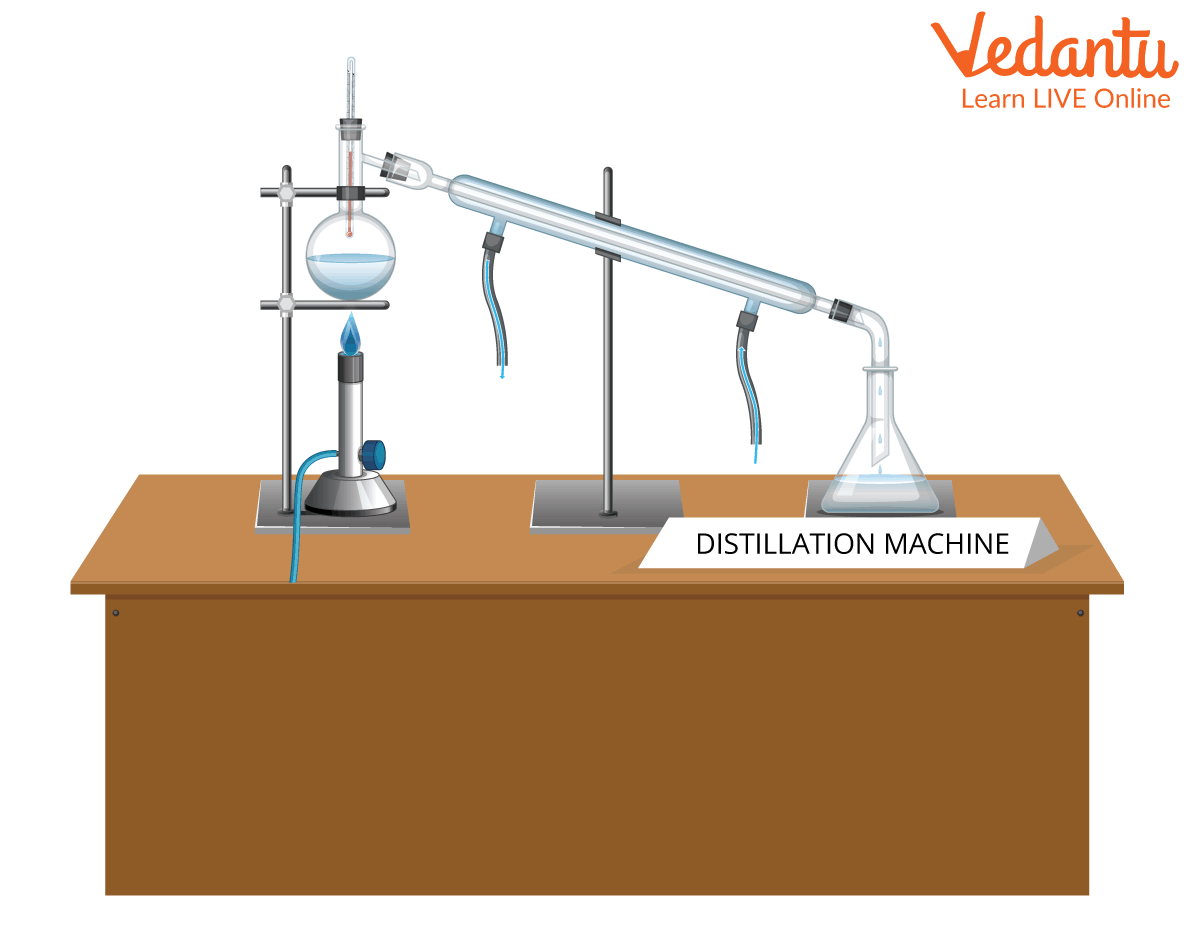




Introduction
From the fuel that runs our cars to the water we drink are some of the distillation examples in everyday life; distillation is the source of many of the items we use practically and every day. There are several uses for distilled water, including in low-volume humidifiers and lead-acid batteries. With this technique, many fermented items, including alcoholic beverages, are cleansed. Cooling distillation is a method for dividing air into nitrogen, oxygen, and argon.
Uses of Distillation
There are various practical uses of distillation in daily life, as follows:
Purification of Water - Natural water comes with many minerals and contaminants, many of which can be eliminated through distillation. Distilled water is frequently used where the presence of minerals could diminish the efficiency of specific equipment, such as steam irons or cigar humidors. Some people prefer the flavour of distilled water or choose to stay away from the minerals in tap water.
Alcoholic Drinks - Whiskey, rum, and brandy are just a few alcoholic beverages made through distillation. A diluted form of ethyl alcohol is created during fruit and plant components fermentation. During the distillation process, a wide range of other components are also gathered, including water, esters, and various forms of alcohol.
Petroleum Products - Oil refinery waste can be used to make various items. Oil is refined into distinct materials utilising a procedure known as fractional distillation since each of these products has a different boiling point. These consist of fuel oil, diesel fuel, and lubricating oil.
Perfume - Making perfume was one of the first applications of distillation, which started approximately 3500 B.C. Essential oils, which can be obtained through distillation, contain the fragrance of several plants and herbs.
Food Flavourings - Natural food flavourings are also made using steam distillation. Citrus oils and liquid extracts of different herbs and spices are the most popular.
Scientific Applications - A real-world application for distillation is in the lab. Although the products of this kind of distillation might not end up in our homes, the technique is frequently employed in chemical and pharmaceutical research and quality assurance testing for numerous consumer goods.

Distillation Process
What is Distillation?
Distillation is selectively boiling a component in a liquid mixture and then condensing it. It is a method of separation that can be applied to either get more of one particular component out of a mixture or to separate it almost completely.
By pushing one of the components in the liquid mixture into a gaseous state, the distillation process takes advantage of the different boiling temperatures of the liquid mixture's constituents.
It is significant to highlight that distillation is a physical separation process rather than a chemical reaction.
In several methods for purifying water, distillation is essential. Several desalination facilities use this technique to get drinking water from the ocean.
On an industrial scale, distillation is also used to clean the liquid byproducts of chemical production.

Distillation Machine
Application of Distillation
Recovery of Solvents means distillation makes the process more cost-effective by recovering the expensive solvents frequently employed to separate the active chemical components from crude medicines.
The process of steam distillation is used to extract several volatile oils, including clove oil, fennel oil, and others.
Production of official preparations shows distillation techniques are used to create official preparations, such as distilled water and water for injection.
Distillation techniques can create pure items, such as Absolute alcohol.
Elixirs and other formulations can have their alcohol content measured using distillation techniques for quality control.
Conclusion
Components are separated via the distillation process based on their respective boiling points. The temperatures of substances like regular gas, diesel, and jet fuel differ. Mixed feed streams are separated into different products using distillation columns. The distillation process becomes more difficult the closer the boiling point differences. Distillation takes advantage of the fact that each substance in a solution has a distinct boiling point.
FAQs on Practical Uses of Distillation
1. Why does distillation not involve chemicals?
Due to the phase transition from liquid to gas (vapour) and back to liquid, distillation is a physical process. In general, it is not intended for any chemical changes to take place during the distillation process.
2. What elements influence distillation?
Dew point, water volume (or depth at a fixed water-vapour surface area), vapour volume (or volume occupied by the vapour), enclosure shape, pressure, and several other variables have an impact on a distillation system's performance.
3. Why is boiling point crucial in the distillation process?
Because various compounds frequently have different boiling points, the components often separate from a mixture when a mixture is distilled. The temperature at which the external pressure acting on the surface of a liquid equals the vapour pressure of the liquid phase of a chemical is known as the boiling point.









